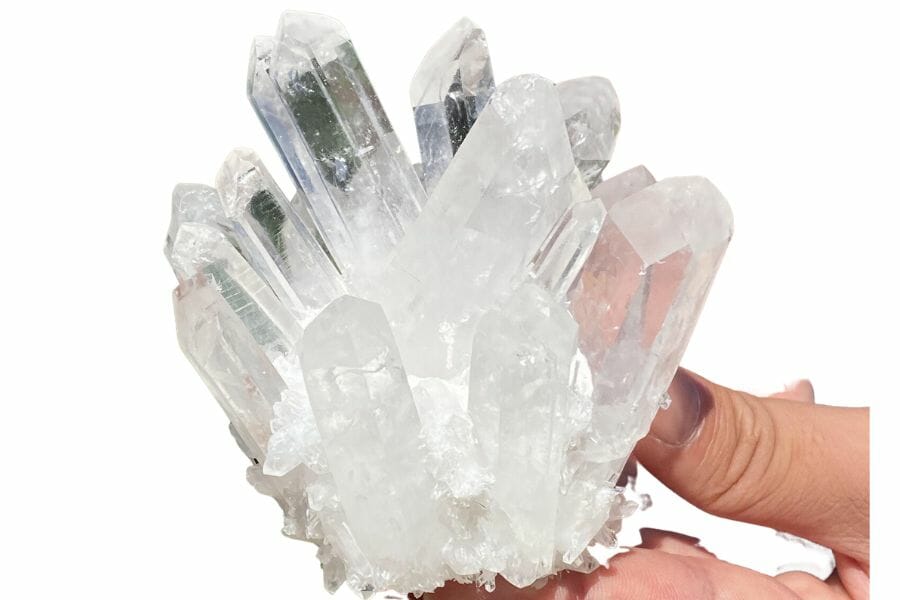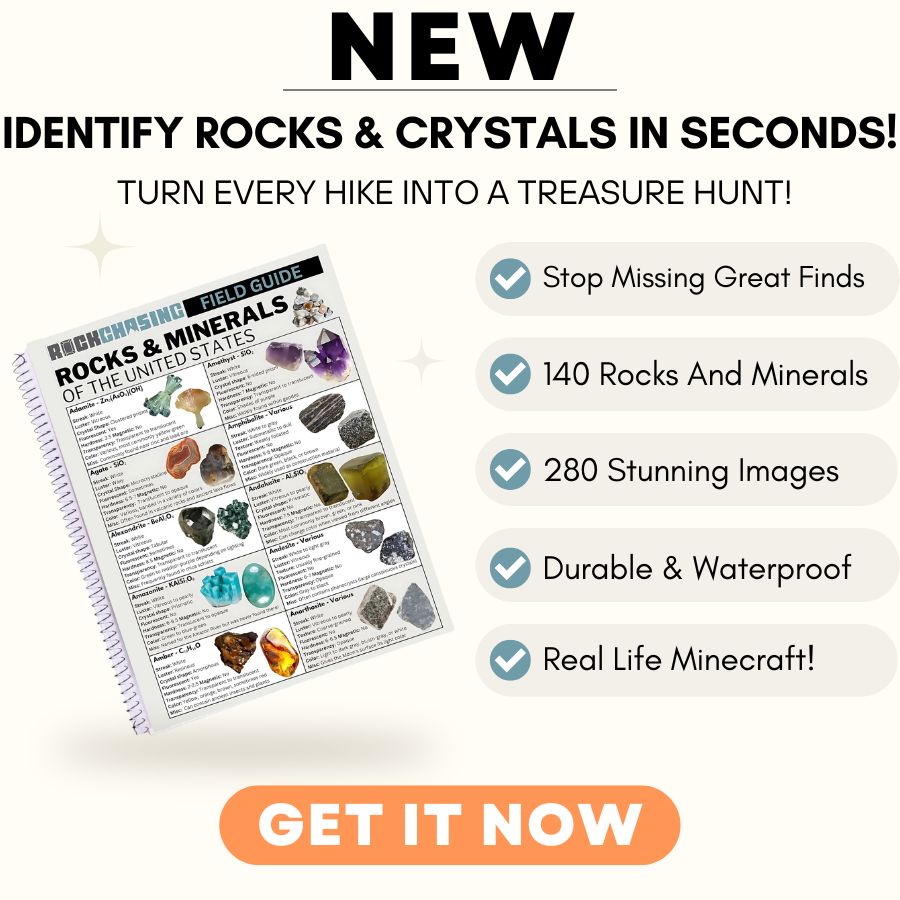Finding crystals can be a rewarding adventure, offering a unique way to explore the natural beauty and geology of the region. Whether you’re a seasoned rockhound or just getting started, knowing where to look is key to uncovering these hidden treasures.
In this state, a variety of locations provide opportunities to discover different types of crystals. From rocky outcrops in the mountains to stream beds that carry sparkling surprises, each area offers its own unique finds for those willing to search.
We can help you get started with some places you can explore for crystals below!
Crystals you can find in the US
The United States offers a wide range of crystals that reflect its diverse geology. From vibrant gems to more subtle mineral formations, there’s something to discover in nearly every region.
Calcite
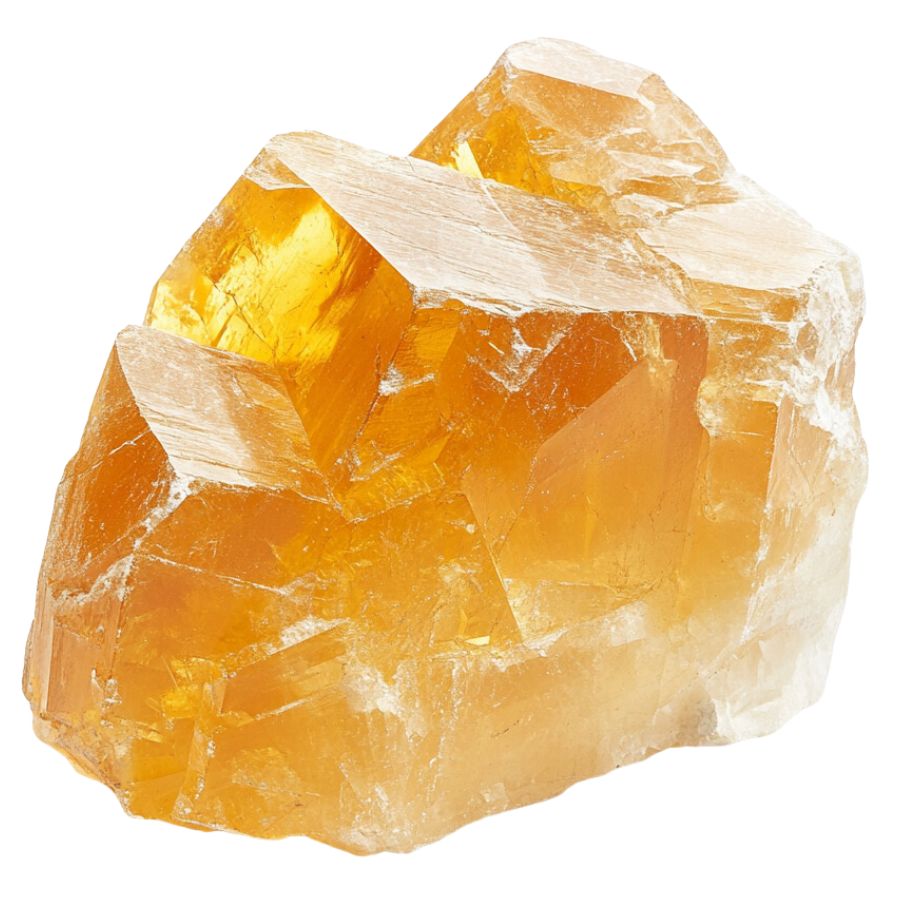
With a variety of forms and a unique property of double refraction, calcite allows objects viewed through the crystal to appear doubled. This mineral can appear in a spectrum of colors, with pure forms typically being transparent or white.
In addition, calcite reacts vigorously with acids, which aids in distinguishing it from other minerals. It also frequently contributes to the structure of sedimentary rocks such as limestone.
Gypsum
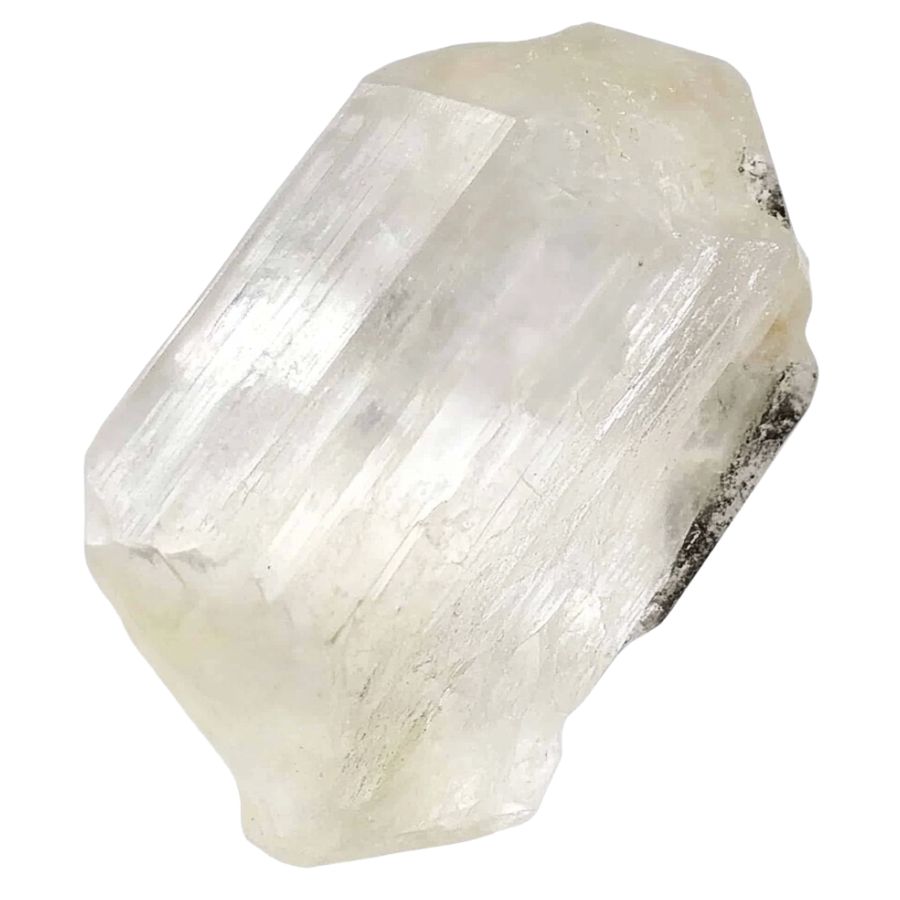
Gypsum’s notable softness allows it to be easily scratched with just a fingernail, often presenting as white or very light-colored in its pure form.
It manifests in both crystalline forms, like selenite, and massive forms such as alabaster, making it versatile in use and appearance.
Gypsum is also essential in the construction industry and is a key component in the manufacture of plaster and drywall.
Fluorite
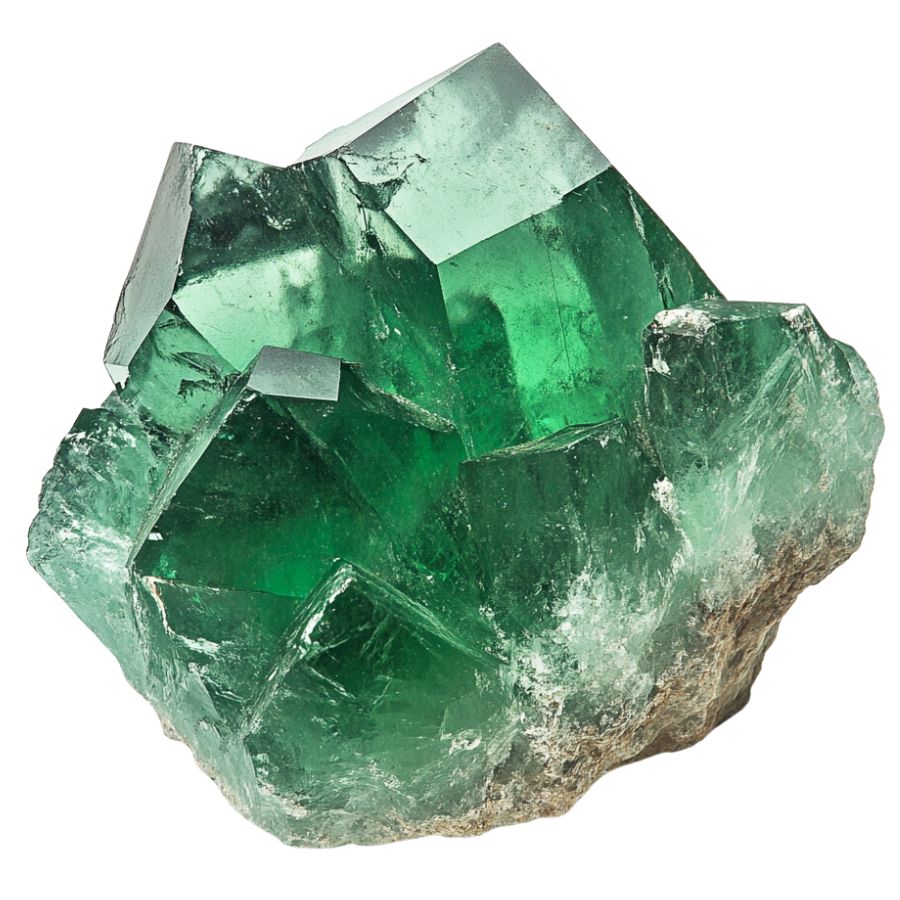
Fluorite comes in a wide range of vibrant colors, including purples, greens, blues, and yellows, and is known for forming in well-defined cubic crystals.
Beyond this, fluorite exhibits fluorescence under ultraviolet light! It can also be used in various industrial applications, including as a flux in steelmaking.
Galena
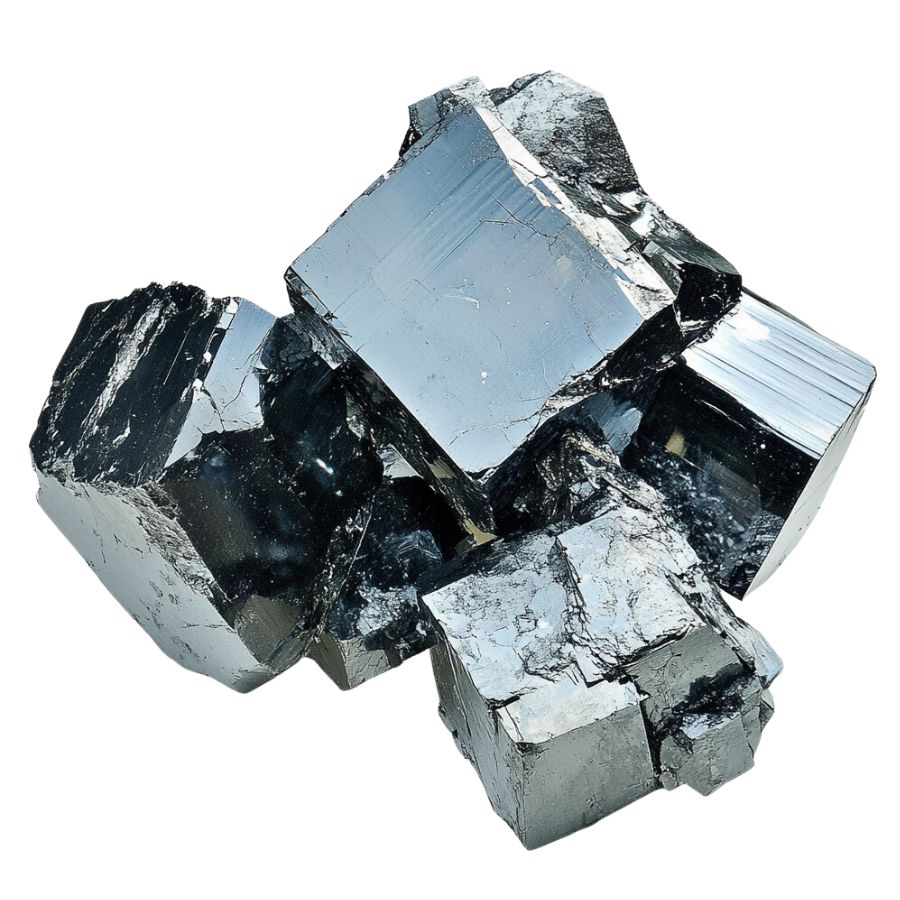
Galena distinguishes itself with a metallic luster and high density, typically found in a cube-like form. It serves as the primary ore of lead, making it important in the metal industry, while its shiny, silver color attracts collectors.
Not only does its appearance make it a subject of interest, but its weight and texture provide tangible lessons in mineral density and metallic properties. Galena also often contains traces of silver, adding to its commercial and educational value.
Corundum
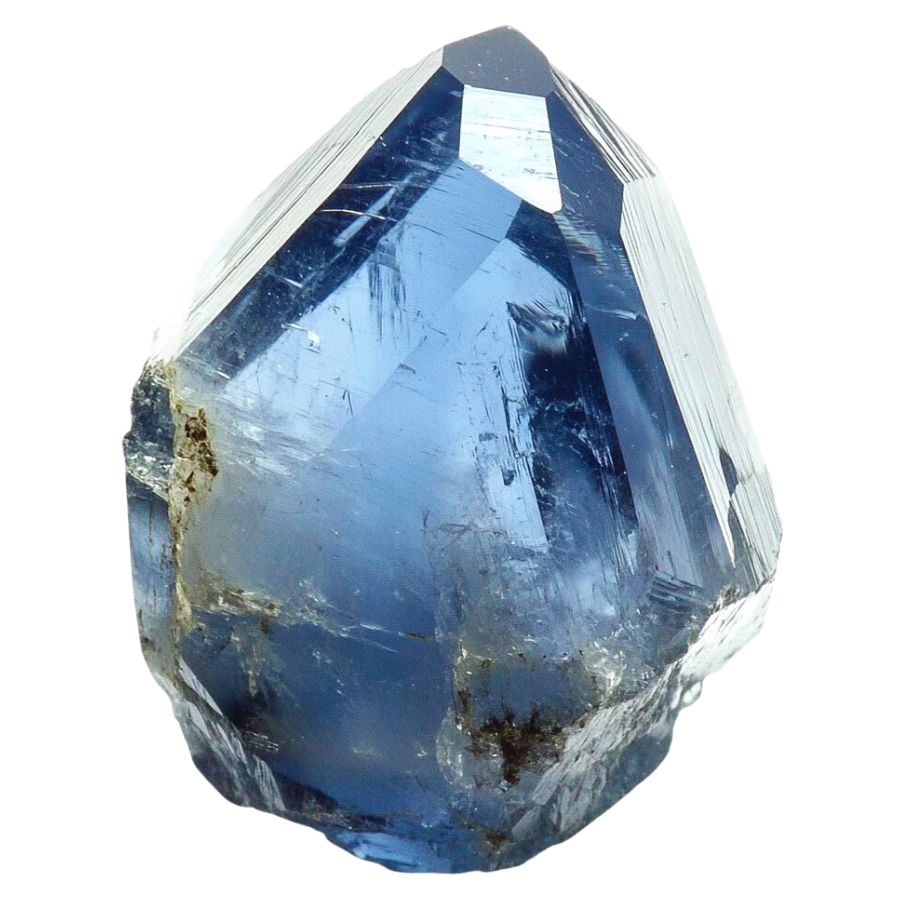
Corundum is a mineral that comes in a variety of colors, though it is typically transparent or gray. Its most famous forms are sapphires and rubies, which are prized for their vibrant blue and red hues.
The mineral is known for its remarkable hardness, ranking just below diamond on the Mohs scale. This durability makes corundum ideal for industrial abrasives and cutting tools, as well as a popular choice for fine jewelry.
Quartz
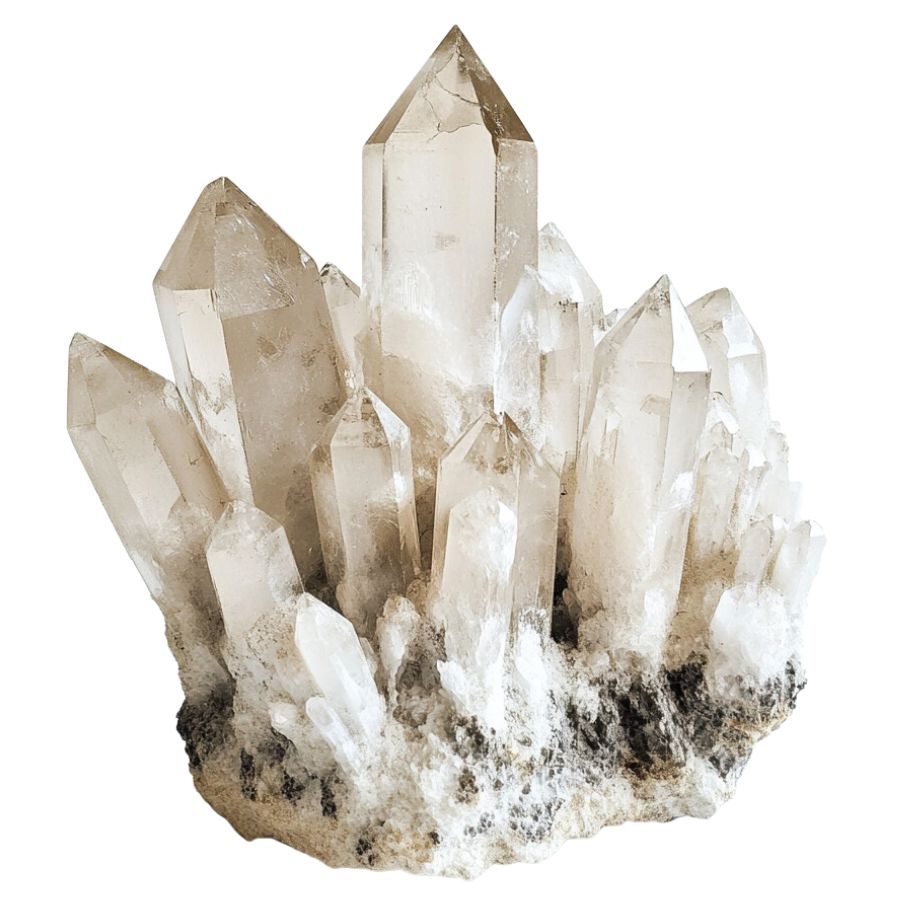
Quartz is among the most common minerals in the Earth’s crust and is prized for its durability and variety. It forms in a wide range of colors and types, from clear rock crystal to purple amethyst.
The mineral is notable for its hardness and durability, which contribute to its use in a variety of applications. Quartz is also popular in the manufacturing of electronics and watches due to its piezoelectric properties, which allow it to convert mechanical pressure into electrical energy.
Pyrite
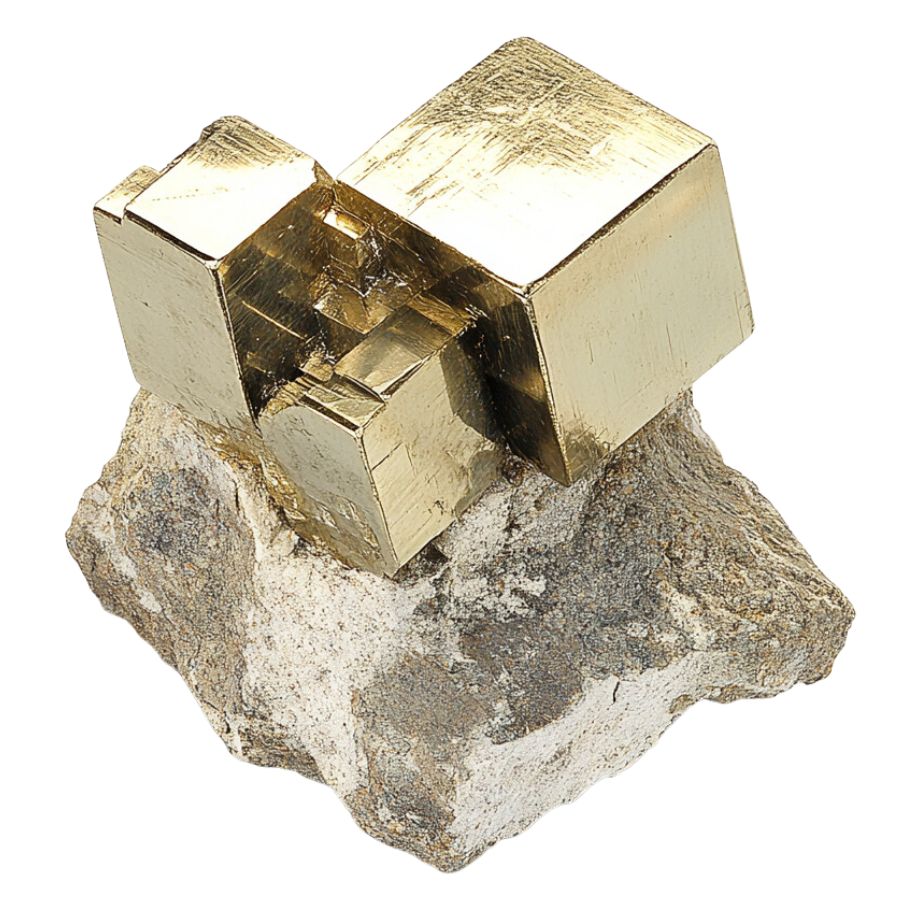
Often mistaken for gold due to its metallic luster and pale brass-yellow hue, pyrite is known colloquially as “fool’s gold.” Its characteristic cube-shaped crystal formations look man-made but are actually completely naturally formed!
Pyrite also has historical importance in producing sulfur dioxide for sulfuric acid production.
Rhodochrosite
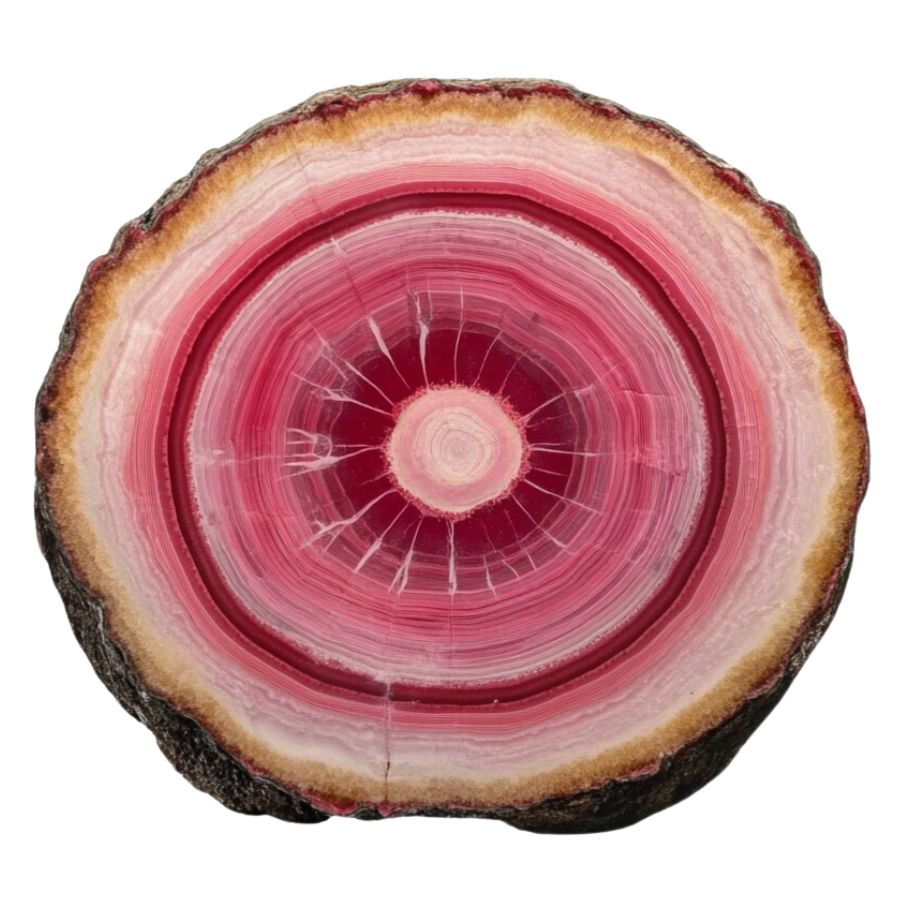
Rhodochrosite stands out with its rich pink and red hues, making it highly desirable as both a mineral specimen and a gemstone.
It typically forms in layered or stalactitic structures, with bands of colors that showcase how it grew over millions of years.
Beyond its beauty, rhodochrosite is significant as the main source of manganese, an essential element used in metal alloys.
Rhodonite
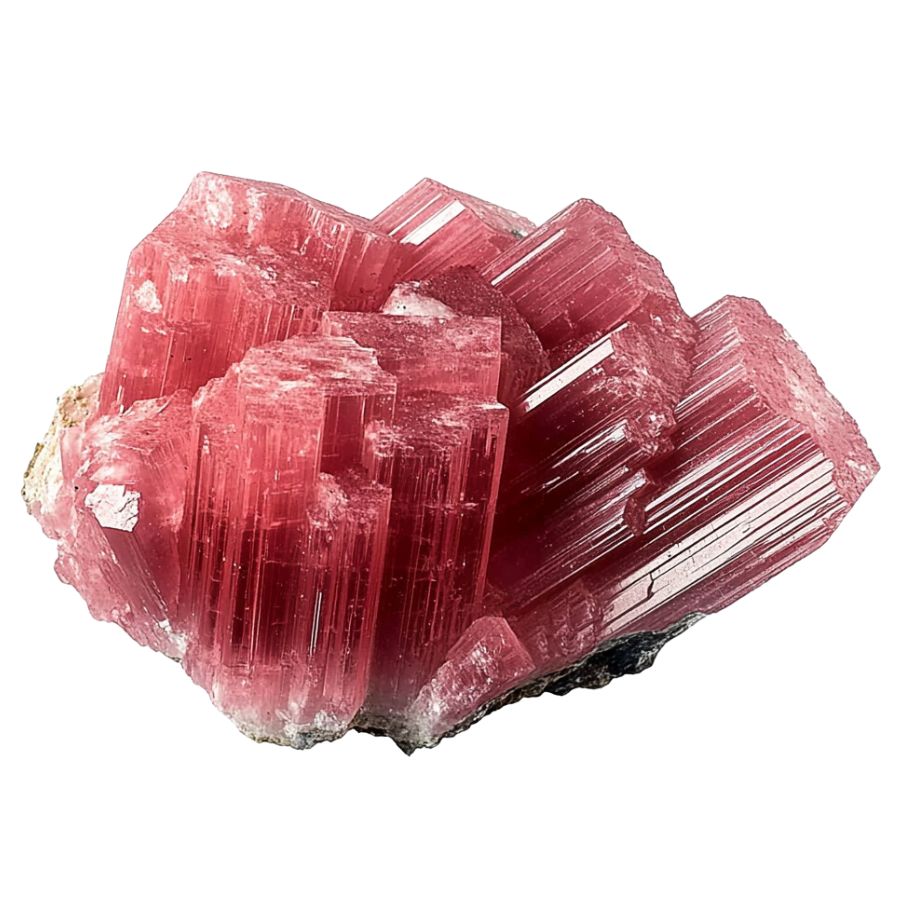
Appreciated for its deep pinks and reds, often complemented by black manganese oxide veins, rhodonite presents a dramatic appearance. It is typically found in metamorphic rocks and is used both as an ornamental stone and in jewelry.
In geology, rhodonite is significant for its role in metamorphic processes and its association with other manganese-rich minerals. It can be found in metamorphosed sedimentary rocks and is sometimes used as an indicator of the presence of manganese deposits.
Vivianite
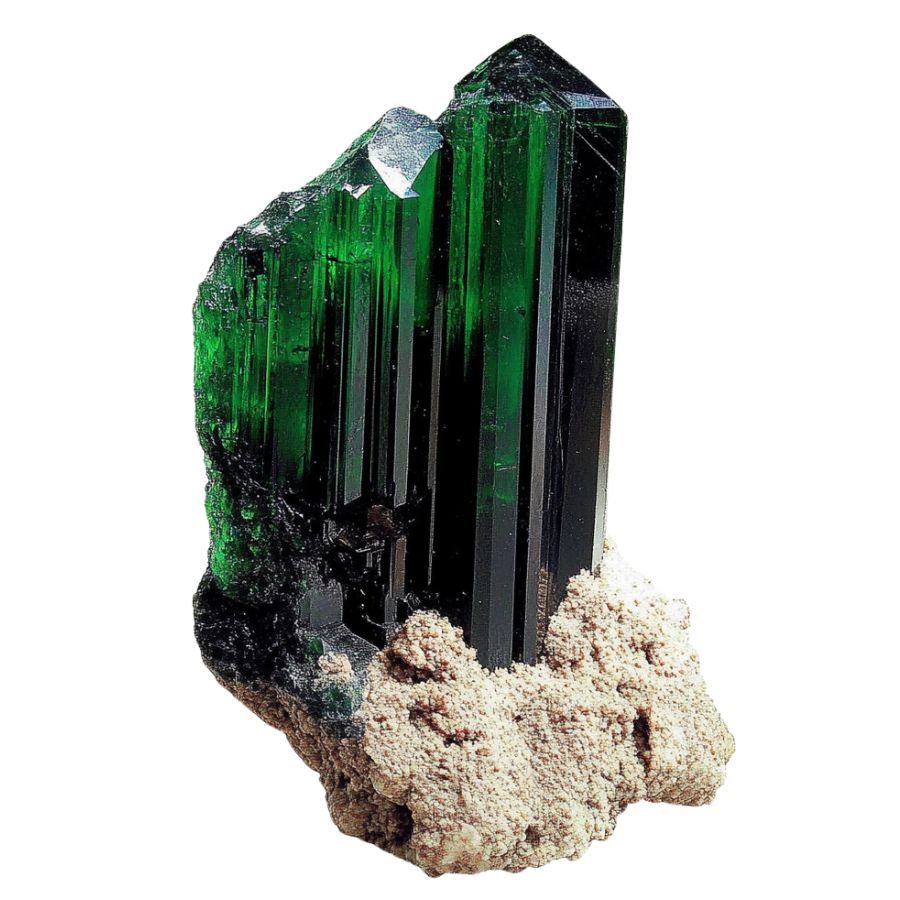
Vivianite, an iron phosphate mineral, emerges in low-oxygen environments like peat bogs or iron-rich deposits. Its striking blue to green color, which can change to a lighter shade over time due to oxidation, makes it a distinctive mineral.
Found in various geological settings, vivianite provides clues about the local conditions and the presence of phosphate deposits.
The Types of New Jersey Crystals You Can Find
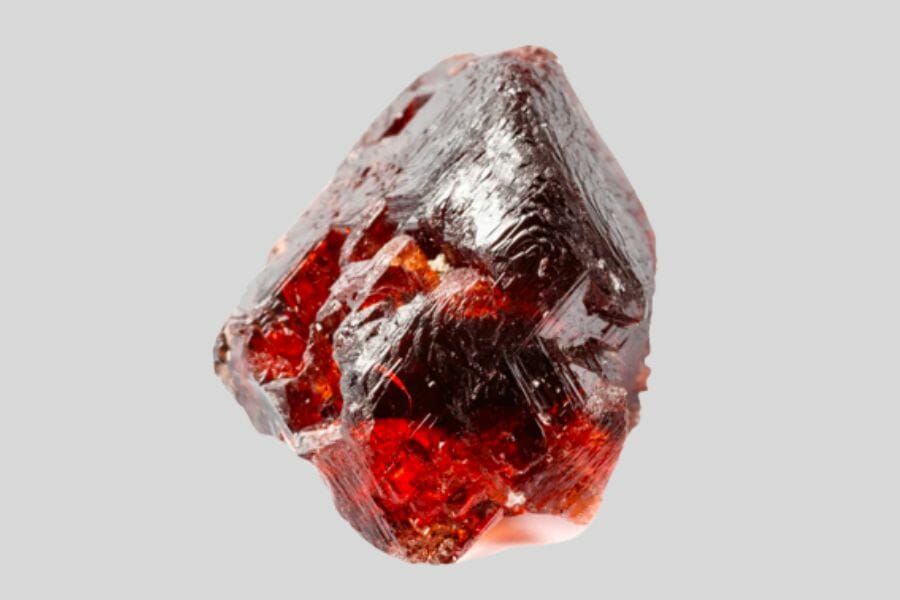
With its rich geological history, there are a huge number of incredible New Jersey rocks that are a treasure trove for crystal enthusiasts. Our state boasts of a variety of crystal mining sites, ranging from abandoned mines to active quarries, each offering its own unique crystals and formations. And below is a list of some of the most amazing crystals that you can find here.
Rare crystals found in New Jersey
- Agate
- Amethyst
- Amber
- Garnet
- Jasper
- Rutile
More common crystals found here
- Apatite
- Apophyllite
- Calcite
- Carnelian
- Chalcedony
- Chalcopyrite
- Chrysocolla
- Epidote
- Galena
- Hematite
- Malachite
- Muscovite
- Opal
- Prehnite
- Pyrite
- Quartz
- Serpentine
- Tourmaline
- Tremolite
- Turquoise
What rough crystals look like
When you’re out looking for crystals on your own it’s important to know what you’re looking for. This is what you need to look out for:
Look for exteriors like this
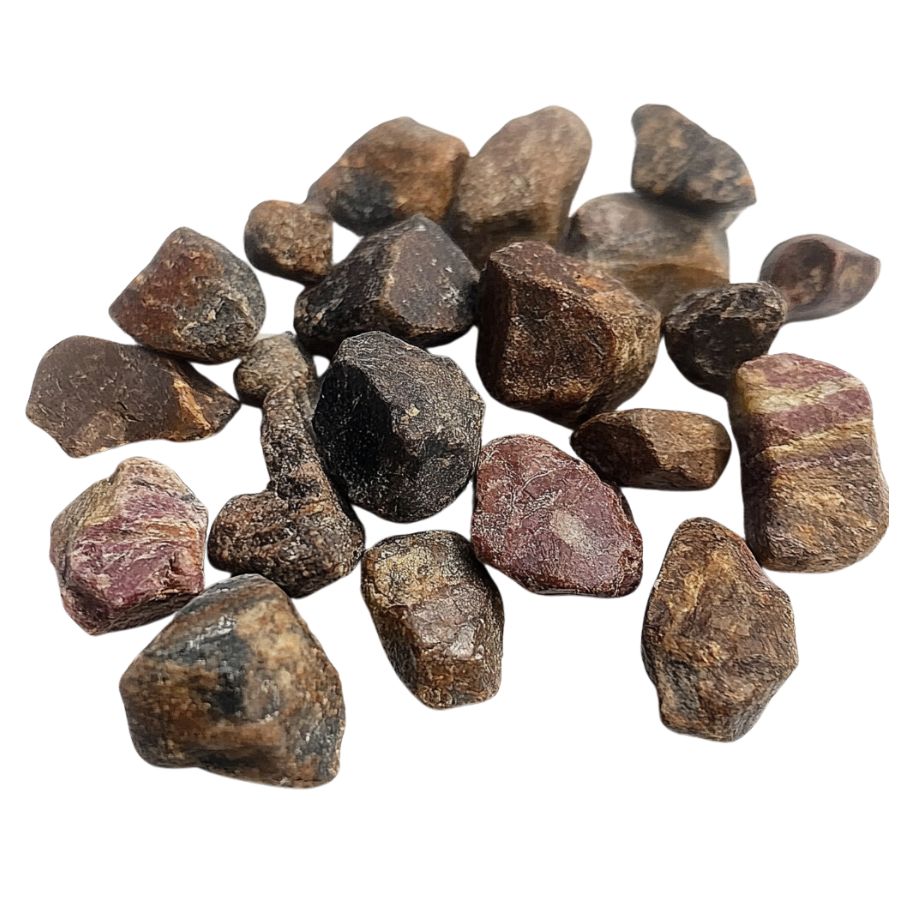
When you’re out searching for crystals in the wild, it’s essential to keep in mind that what you find won’t look like the polished stones you see in stores. One important tip is to consider what certain crystals look like in their raw, natural form.
Without the shine and smooth finish, crystals might appear rough, with jagged edges or earthy tones masking their true beauty. Understanding this can help you spot potential finds that might otherwise be overlooked.
Examine the crystal structure and shape
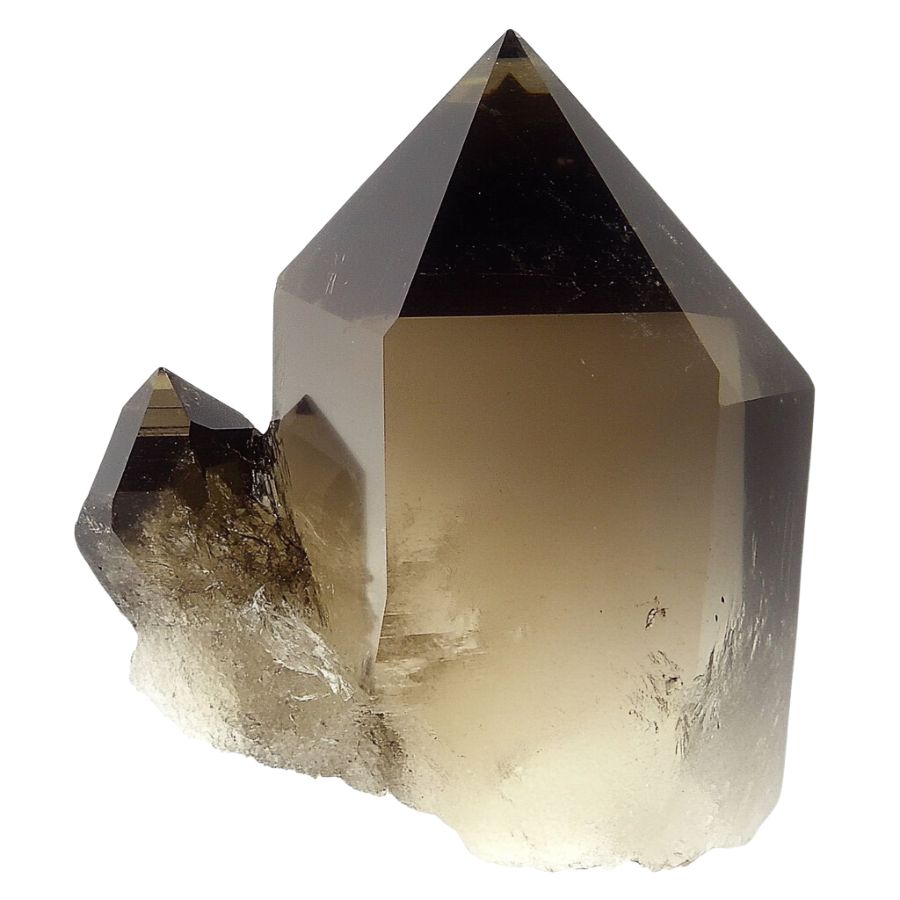
Crystals often form in specific geometric patterns that can be key to identifying them. For example, quartz is known for its hexagonal prisms, while halite typically forms cubic shapes.
By recognizing these distinct patterns, you can differentiate between various types of crystals and better understand what you’ve found.
Observe color
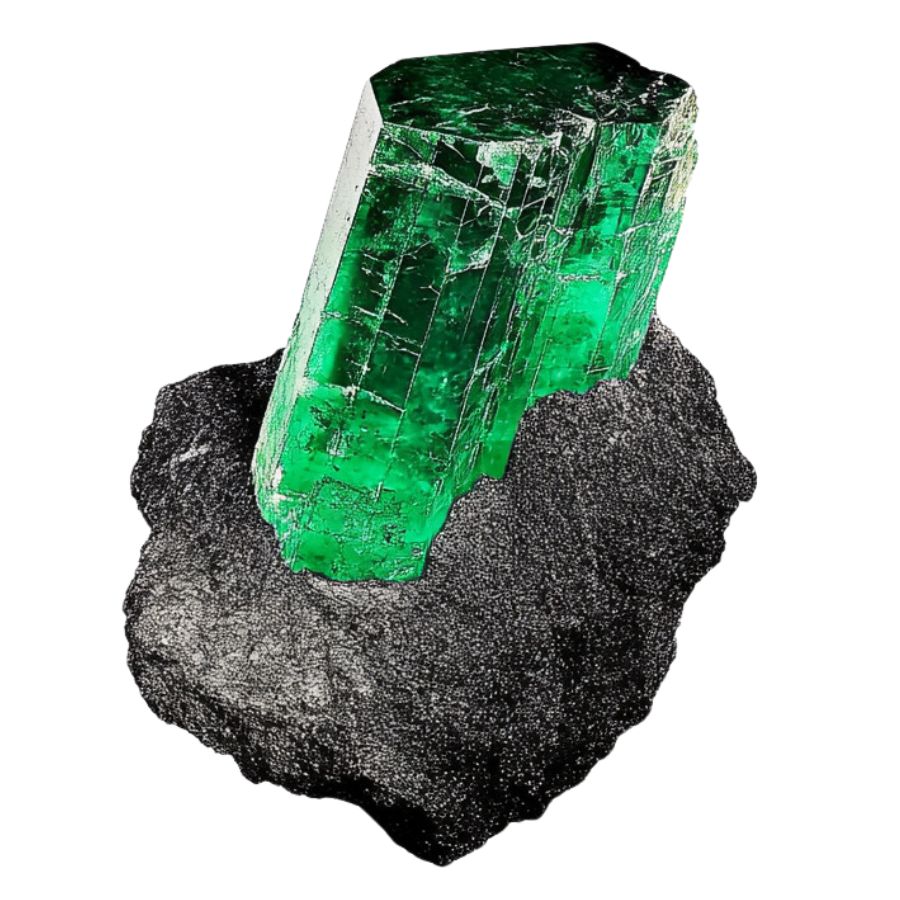
Some crystals are known for their distinct hues, like the deep purple of amethyst or the vibrant green of emerald. However, not all crystals will have strong colors; some may be clear or only slightly tinted.
Check the luster
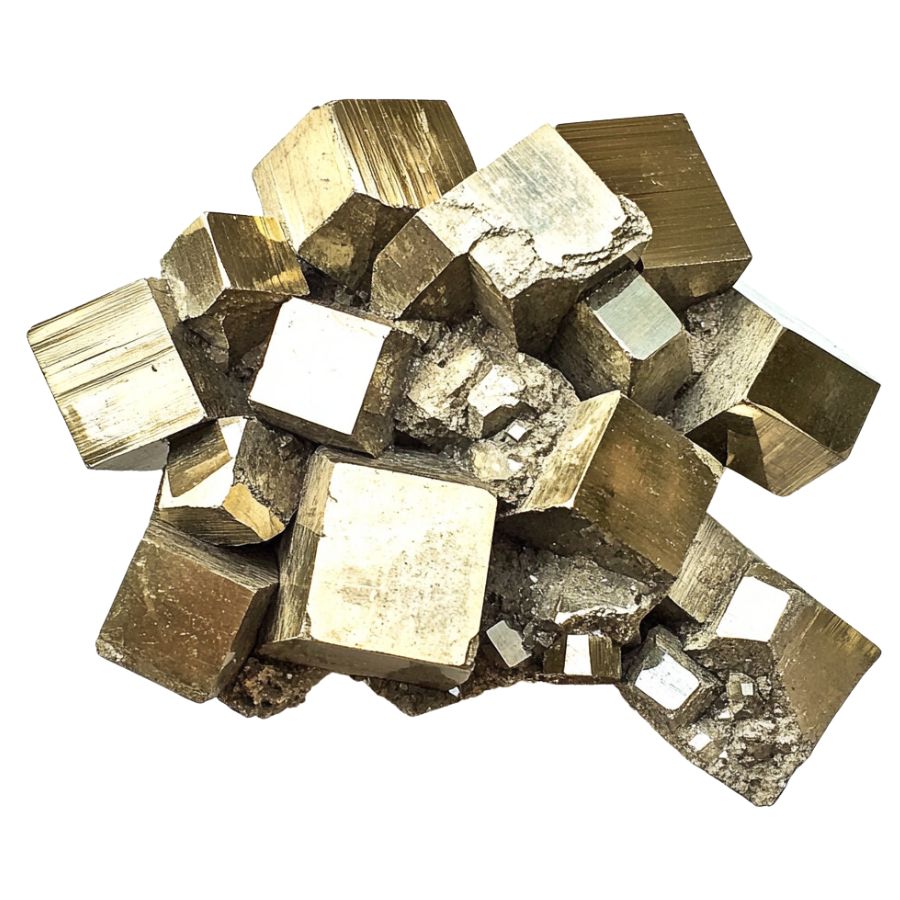
Luster refers to how a crystal’s surface interacts with light. Some crystals might have a shiny, glassy luster, while others may appear metallic or dull. This characteristic can help you determine the type of crystal you’ve found.
However, it’s important to remember that luster isn’t always obvious right away. In some cases, a crystal’s true luster will only become apparent after it’s been cleaned or polished, so keep this in mind as you examine your finds.
Evaluate the transparency
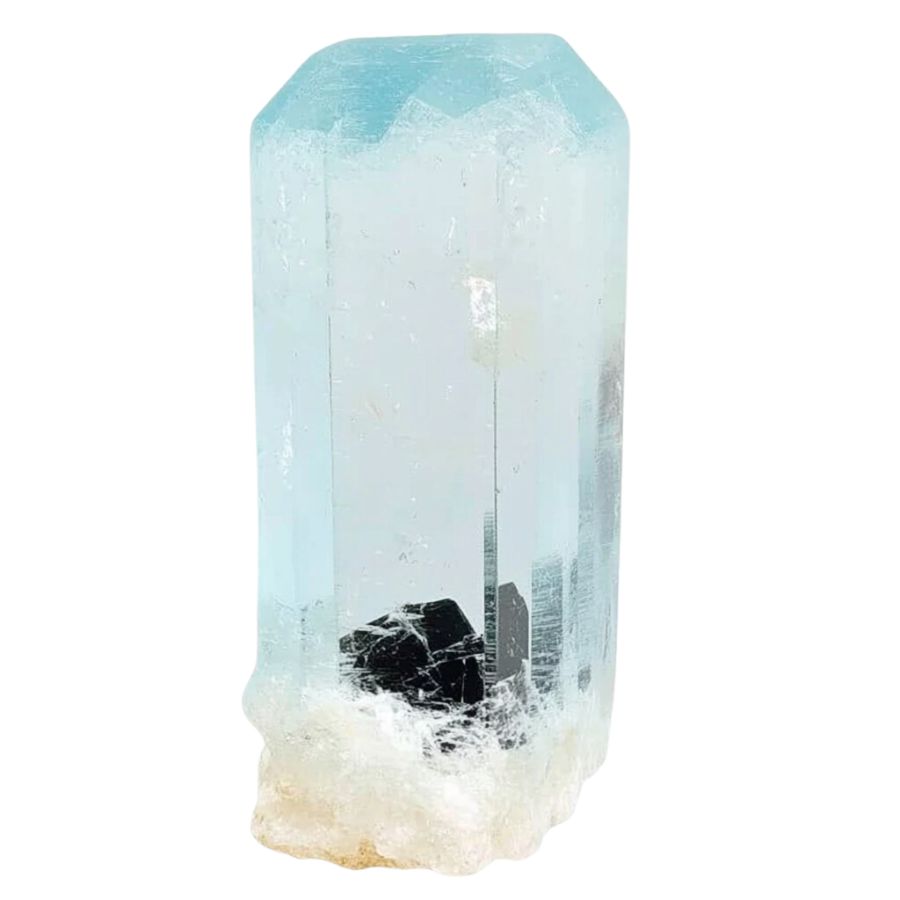
Pay close attention to how much light passes through the crystal. Some crystals are completely clear, allowing light to pass through easily, while others may be opaque and block light entirely.
You might also encounter crystals with translucent edges but opaque centers. These variations in transparency can offer valuable clues about the type of crystal you’ve found, making it easier to identify and appreciate your discovery.
A Quick Request About Collecting
Always Confirm Access and Collection Rules!
Before heading out to any of the locations on our list you need to confirm access requirements and collection rules for both public and private locations directly with the location. We haven’t personally verified every location and the access requirements and collection rules often change without notice.
Many of the locations we mention will not allow collecting but are still great places for those who love to find beautiful rocks and minerals in the wild without keeping them. We also can’t guarantee you will find anything in these locations since they are constantly changing.
Always get updated information directly from the source ahead of time to ensure responsible rockhounding. If you want even more current options it’s always a good idea to contact local rock and mineral clubs and groups
Tips on where to look
Having a better idea of where to look can greatly narrow down your search and increase your chances of finding crystals. By focusing on environments where crystals are likely to be exposed, you can spend less time searching and more time discovering.
Outcrops and Exposed Rock
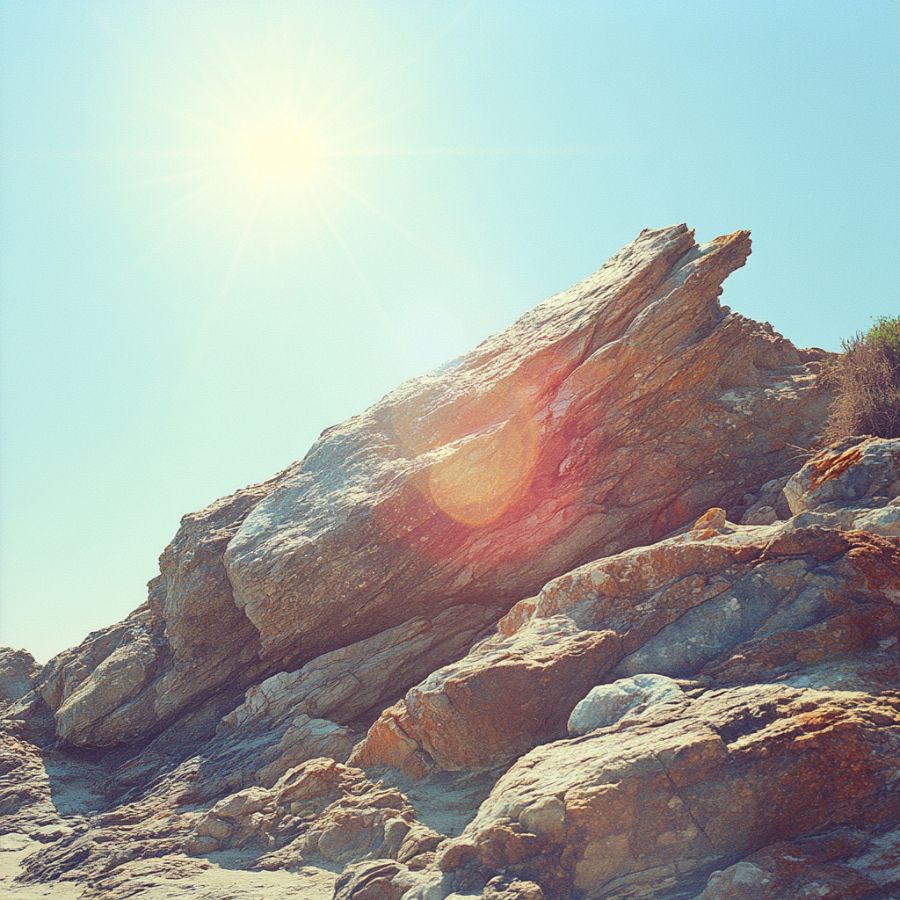
Rocky outcrops are prime locations for finding crystals and minerals. Search along the edges of outcrops, particularly where erosion has worn away the surrounding soil, revealing the rock underneath.
Pay close attention to any visible cracks, crevices, or small cavities within the outcrop, as these are often where crystals develop and can be extracted with minimal effort.
Stream Beds and Gravel Deposits
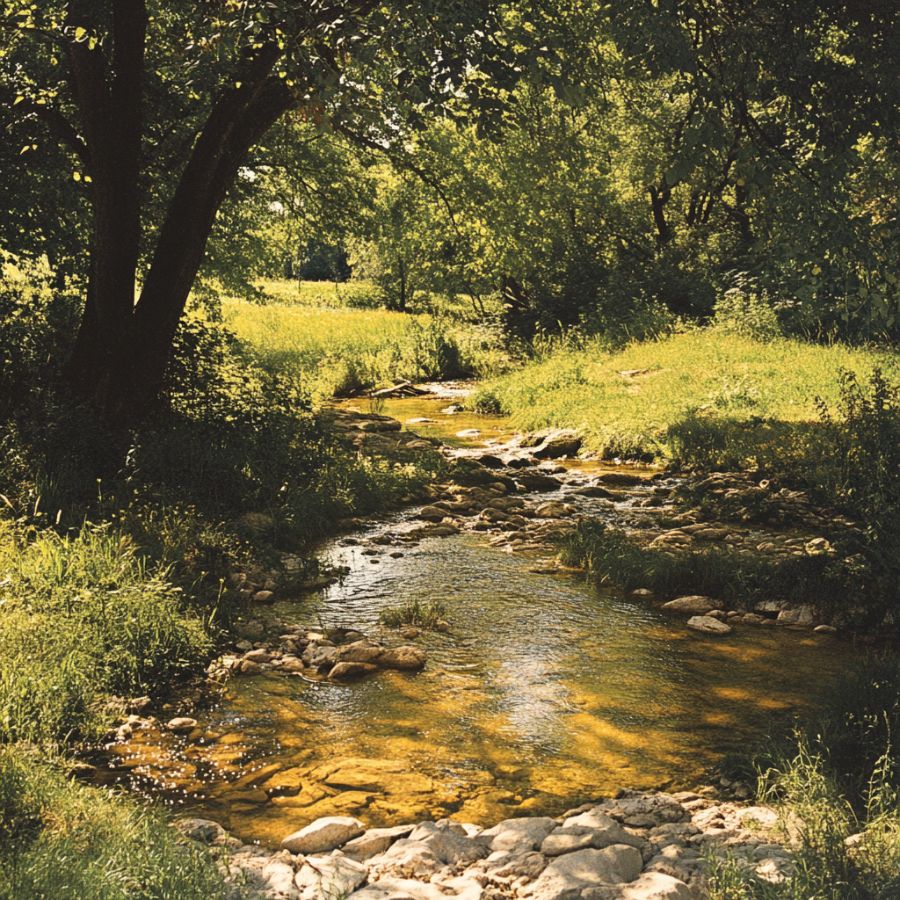
Stream beds are dynamic environments where water flow constantly shapes the landscape. Over time, water can erode rocks upstream, breaking them down and carrying mineral fragments, including crystals, downstream.
When searching in these areas, look for spots where the current has slowed, such as bends in the stream or areas behind large rocks, as these are prime locations for deposits.
Quarries and Mines
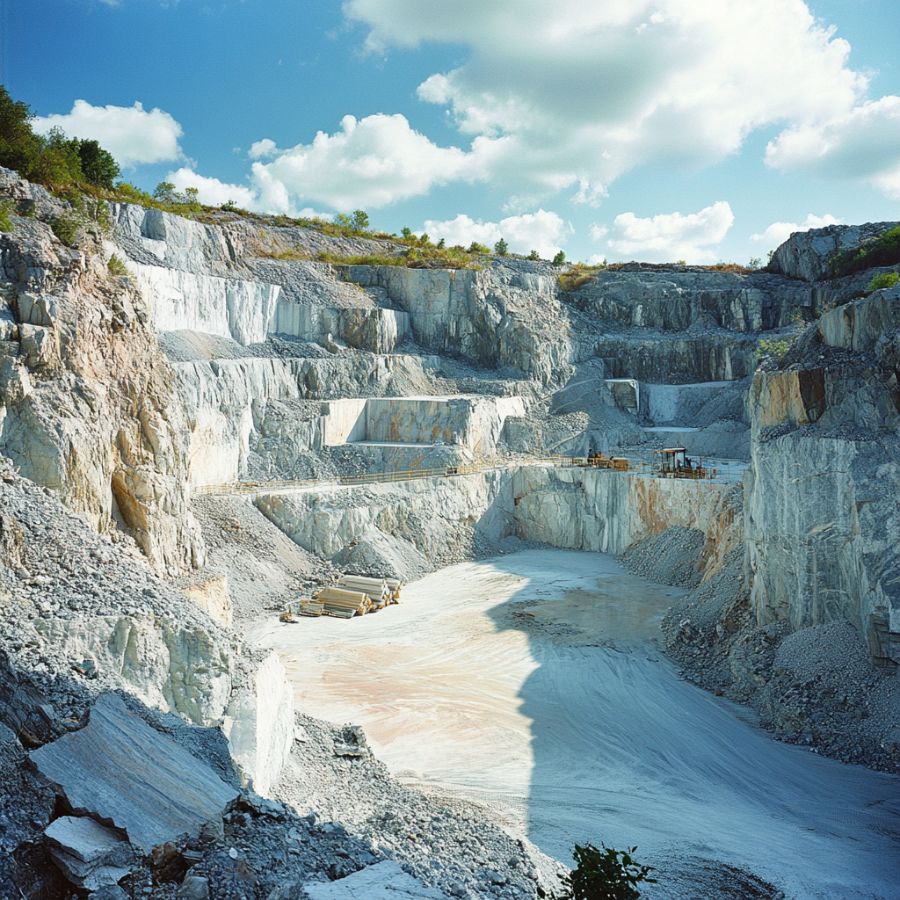
Quarries and mines are excellent places to search for crystals because they expose deep layers of rock that would otherwise be hidden beneath the surface. These sites often contain a variety of minerals and crystals that have been brought to the surface during excavation.
Pay attention to tailings piles, where waste rock is discarded, as they often contain overlooked or broken crystals. Always prioritize safety when exploring these areas and ensure that you have permission to search.
Road Cuts and Construction Sites
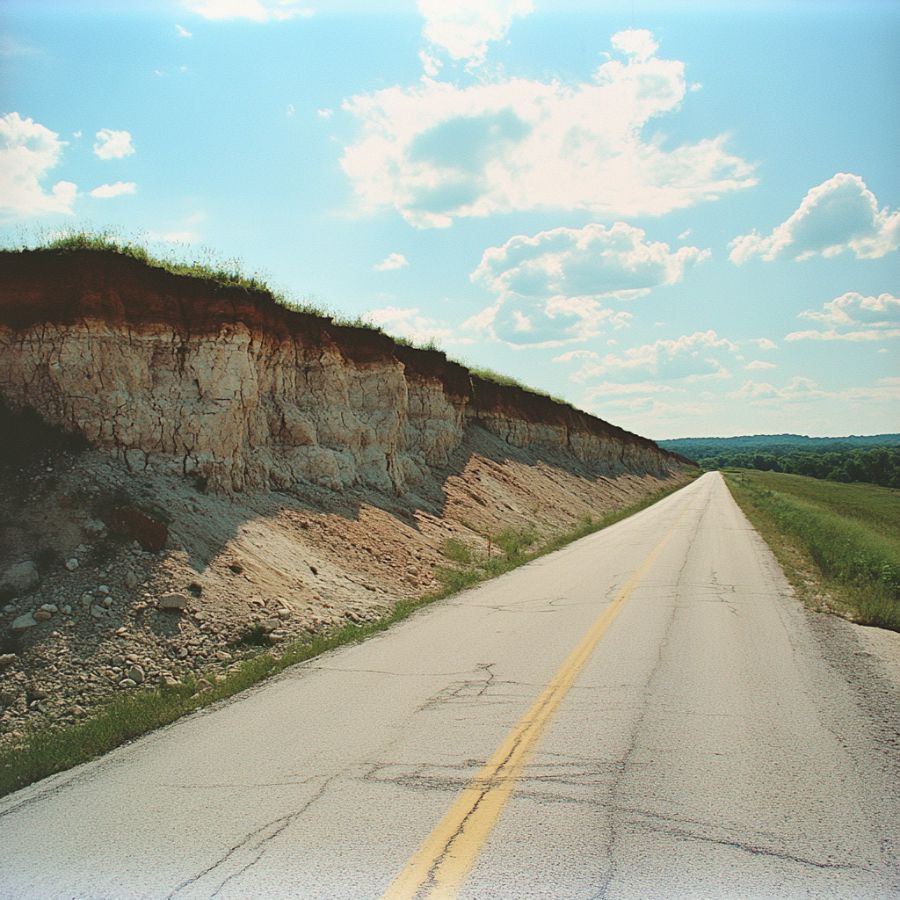
As roads are cut through hillsides or construction projects dig deep foundations, layers of rock and soil that have been undisturbed for millions of years are suddenly exposed.
Look for freshly exposed rock faces, especially where blasting has occurred, as this can create fissures or expose pockets filled with crystals. Be cautious around active construction sites, and always seek permission before exploring.
Mountainous Areas
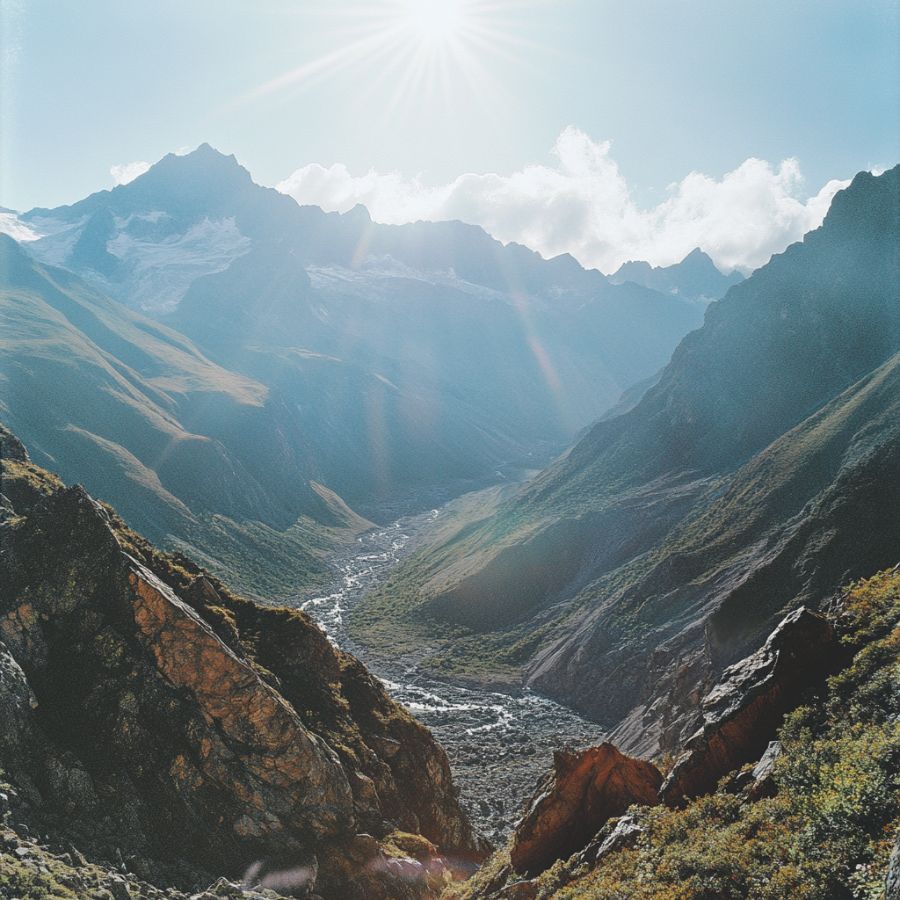
In mountainous regions, erosion caused by wind, rain, and ice can wear away the softer rock, exposing harder crystals that have formed within. Focus on weathered and broken rock formations.
Look for scree slopes, where loose rock has accumulated at the base of cliffs. Additionally, areas near fault lines or volcanic vents are particularly promising, as they often have a higher concentration of minerals.
DON'T MISS OUT ON ANY GREAT FINDS!
While you're out searching for Crystals you're going to find A LOT of other interesting rocks and minerals along the way. The last thing you want to do is toss out something really interesting or valuable. It can be easy to misidentify things without a little guidance.
We've put together a fantastic field guide that makes identifying 140 of the most interesting and valuable rocks and minerals you will find REALLY EASY. It's simple to use, really durable, and will allow you to identify just about any rock and mineral you come across. Make sure you bring it along on your hunt!
New Jersey Crystal Mining Laws And Regulations
Crystal mining in New Jersey is legal for as long as you comply with the existing laws of our state, especially those from the New Jersey Department of Environmental Protection (NJDEP) that regulates this activity on public lands.
If you’re exploring private lands, make sure to obtain permission from the owner first. Similarly, if you’re searching on government land, coordinate and get necessary permits from concerned government agencies.
Take note, by respecting and abiding by these laws, you are also helping ensure the sustainability of crystal mining in New Jersey.
- The extensive local experience and understanding of our team
- Input from multiple local crystal hunters and crystal collecting groups
- The accessibility of the crystal mining locations
- Safety and potential hazards when collecting
- Private and public locations
- A desire to include locations for both experienced crystal hunters and those who are just starting out
Using these weights we think we’ve put together the best list out there for those who love finding new crystals for our collections!
The Best Locations For Crystal Mining in New Jersey
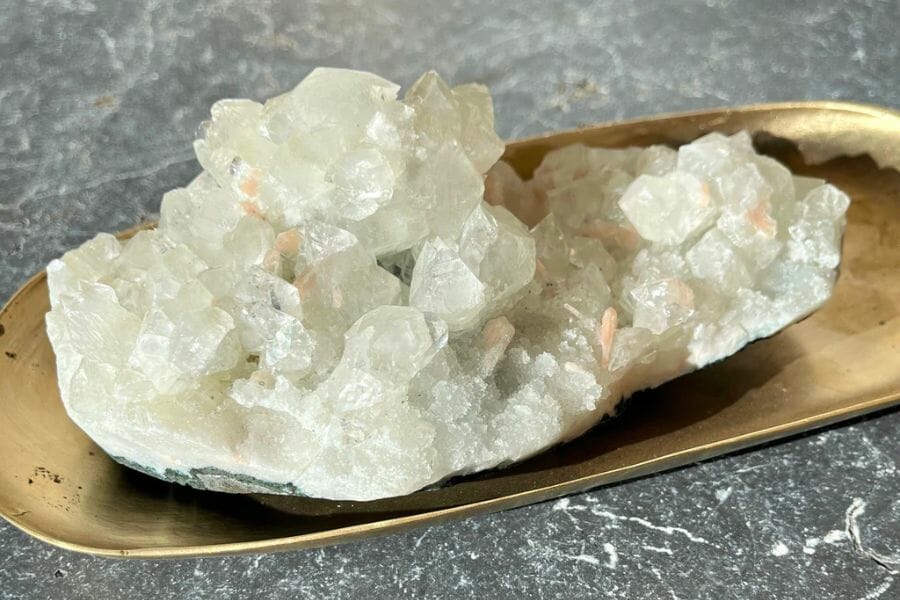
We’ll share with you our top recommended places first in case you only have time to visit a few crystal hunting sites here. We had the best of time (and best of finds!) in these spots, and we know you will, too!
Always Confirm Access and Collection Rules!
Before heading out to any of the locations on our list you need to confirm access requirements and collection rules for both public and private locations directly with the location. We haven’t personally verified every location and the access requirements and collection rules often change without notice.
Many of the locations we mention will not allow collecting but are still great places for those who love to find beautiful rocks and minerals in the wild without keeping them. We also can’t guarantee you will find anything in these locations since they are constantly changing.
Always get updated information directly from the source ahead of time to ensure responsible rockhounding. If you want even more current options it’s always a good idea to contact local rock and mineral clubs and groups
Palisades Interstate Park is Our Favorite Crystal Mine in New Jersey
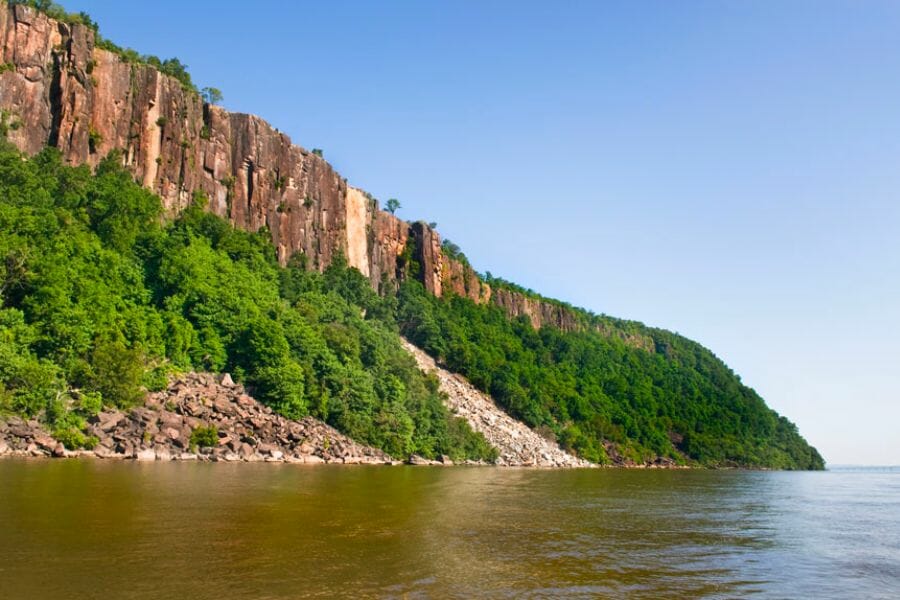
1 Alpine Approach Road, Alpine, NJ 07620
The Palisades Interstate Park is a truly unique location for crystal hunting as it boasts of some of the most diverse and fascinating geological formations in the state. In fact, it’s also one of the top sites for gem mining in New Jersey! It spans over 2,500 acres and stretches along the Hudson River, offering visitors stunning views of the Manhattan skyline as well as some truly remarkable crystals to collect.
The Palisades were formed over 200 million years ago during the Triassic period, making them some of the oldest rocks in the state. The area is dominated by basaltic cliffs and boulders that have been eroded over time by the Hudson River, exposing an array of different minerals and crystals.
Fun fact: The Palisades weren’t always a prime location for crystal collecting. In fact, the park was originally established in 1900 to preserve the scenic beauty of the Hudson River Palisades. It wasn’t until later on that rockhounds discovered the incredible mineral wealth within the park’s rocks.
Where we found crystals at the Palisades Interstate Park
The most crystal abundant quarries occur in the Palisades of the Hudson River in Bergen County. You can find crystals (Agate, Amethyst, Apatite, Calcite, Epidote, Galena, Malachite, Opal, Quartz) in the cavities and debris of this area.
DON'T MISS OUT ON ANY GREAT FINDS!
While you're out searching for Crystals you're going to find A LOT of other interesting rocks and minerals along the way. The last thing you want to do is toss out something really interesting or valuable. It can be easy to misidentify things without a little guidance.
We've put together a fantastic field guide that makes identifying 140 of the most interesting and valuable rocks and minerals you will find REALLY EASY. It's simple to use, really durable, and will allow you to identify just about any rock and mineral you come across. Make sure you bring it along on your hunt!
Pompton Lakes
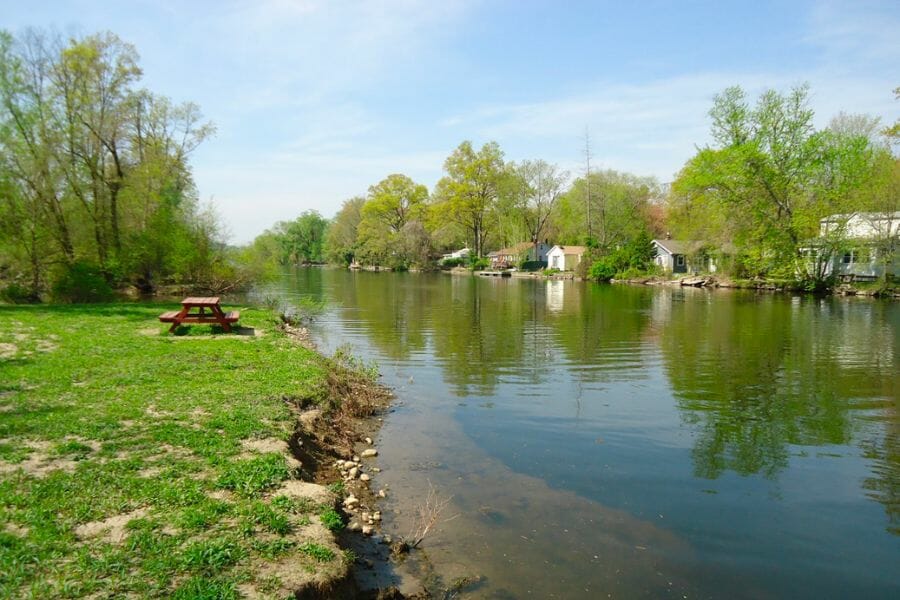
Pompton Lakes and Wayne in Passaic County, NJ
Pompton Lakes were formed during the last ice age. The area is surrounded by hills, and the lakes themselves were formed by glacial melting. The lakes are now a popular spot for swimming, boating, and fishing, but they also have a secret— they contain some fantastic crystals, too!
The geology of this place is unique and diverse, with a mixture of igneous, metamorphic, and sedimentary rocks that creates the perfect environment for crystal growth. As a result, the lakes abound with different minerals and crystals.
Overall, the natural beauty of the lakes combined with the abundance of different minerals and crystals make it a must-see location that you wouldn’t regret visiting.
Where we found crystals at the Pompton Lakes
You can find beautiful samples of Agate (banded), Amethyst, Calcite, Chalcedony, Hematite, Opal, Prehnite, Quartz crystals and more if you explore the area quarries of Pompton Lakes. Get to know these crystals’ value by reading our guide!
Pennington Mountain
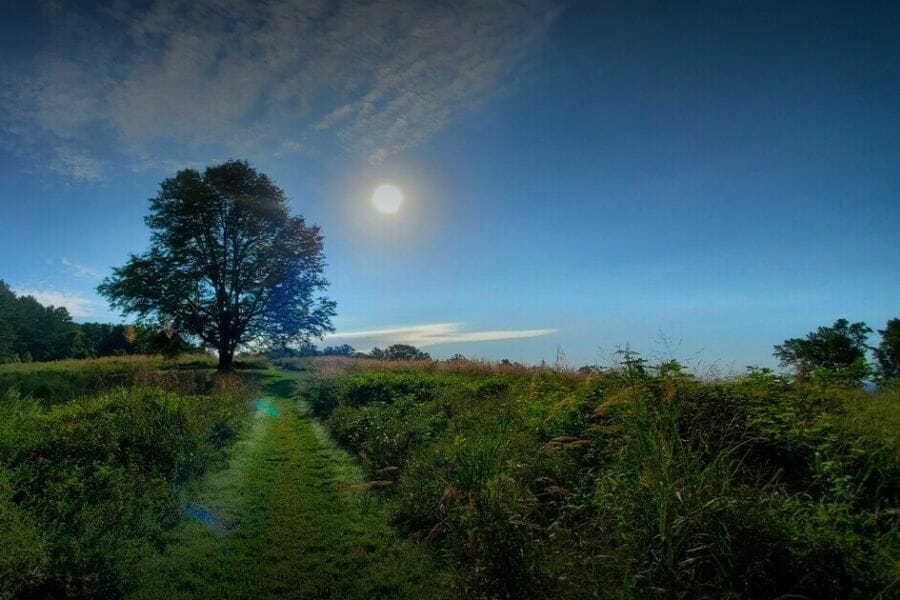
Mercer County, NJ 08534
Located in the northwest part of our state, Pennington Mountain is known for its rugged terrain and beautiful views. As part of the Appalachian Mountains, it’s comprised of different types of rocks, including gneiss, schist, and quartzite.
Did you know that you can find a variety of crystals here? What’s more is that the mountain is home to some fascinating geological formations, such as boulders and cliffs, where you can find pockets and veins of crystals.
The history of Pennington Mountain is also fascinating. The area was once used for mining, and there are still remnants of this activity today. Many of the rocks and cliffs have been blasted open, revealing incredible mineral deposits that are just waiting to be found.
Where we found crystals at Pennington Mountain
You will have the best of luck finding New Jersey crystals here if you explore the north side area of the Pennington Mountain.
Houdaille Quarry
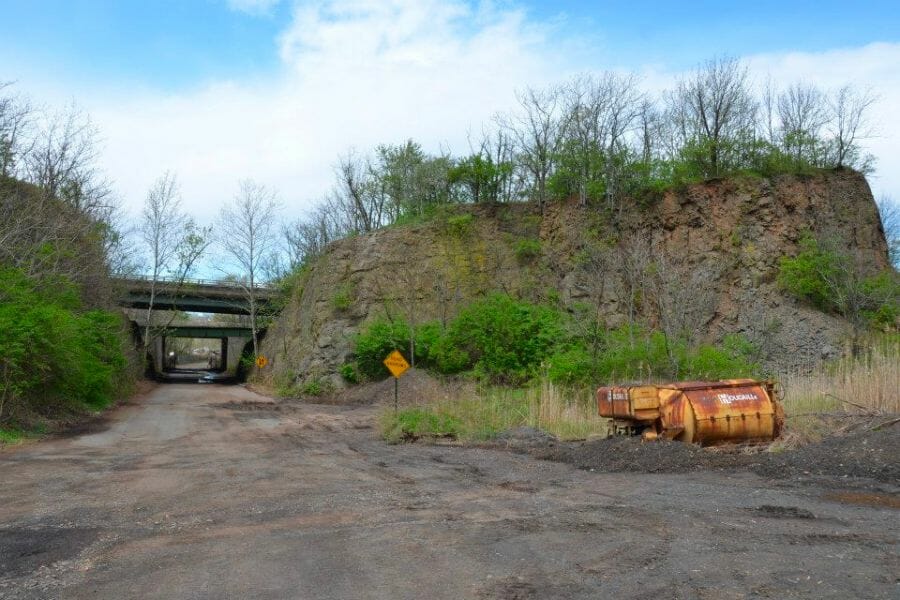
48242 Los Gatos Creek Rd, Coalinga, CA 93210
Houdaille Quarry is located in Sussex County, New Jersey. Once regarded as a great place for mining, the quarry remains a fascinating place to explore if you’re interested in the area’s history.
But what really makes it special is the different kinds of crystals that it has, including its varying range of colors and sizes, from small fragments to larger ones.
If you’re planning a trip to the Houdaille Quarry, there are a few things to keep in mind. The quarry is on private property, so you’ll need to get permission before you start collecting. Additionally, the terrain can be rough, so make sure you have appropriate gear and footwear.
Where we found crystals at Houdaille Quarry
Being a quarry, the different nooks and crannies of this area contains crystals. If you’re here, chances are, you are actually near one!
Our Other Favorite Places For Crystal Hunting
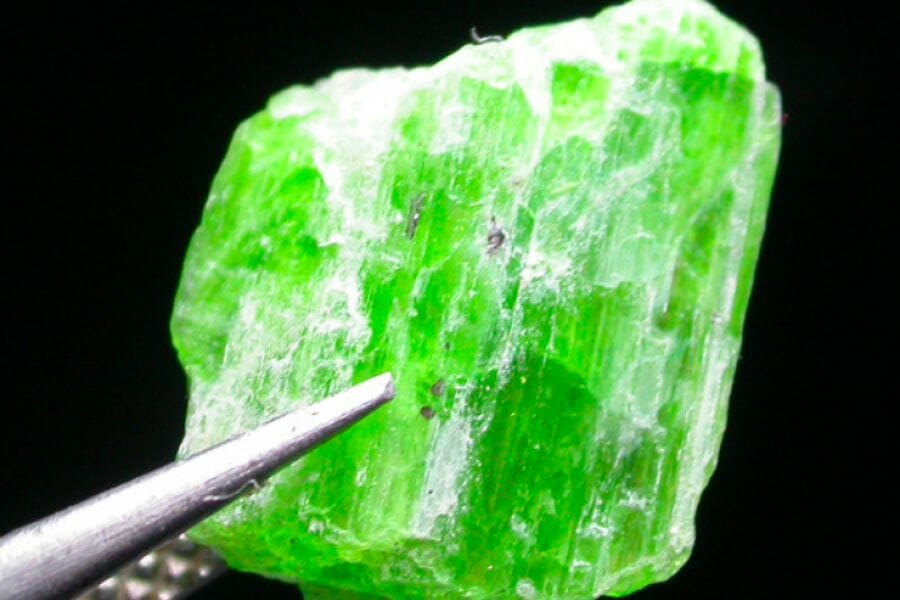
If you’re on a crystal hunting frenzy, our top 5 recommended places above may not be enough. You don’t have to panic, though, because there are plenty other crystal mining spots in New Jersey that you can visit. In fact, some of these places are also great for finding New Jersey geodes!
Where you can find crystals for free in New Jersey
We know that the best spots to find crystals usually require fees, but did you know that our state also has some of the finest, free-to-search places? Here are some of the best ones!
| County | Location |
| Atlantic | In cliffs and at the base of Somers Point area |
| Bergen | Every basalt and diabase outcrop exposed in road cuts, railroad tunnels, building excavations, or other across the entire state |
| Burlington | Extreme northwest corner at Crosswicks Creek, area marl and sand pits |
| Cape May | Area ocean beach sands and gravels |
| Essex | Short Hills and Upper Montclair area quarries |
| Gloucester | Marl pit at Oldmans Creek |
| Hudson | Snake Hill, just off the New Jersey Turnpike east of the Hackensack Road 2 miles E of Jersey City |
| Hunterdon | At the Lambertville Quarry |
| Mercer | A quarry on Rte. 29 between Moore and Lambertville |
| Monmouth | In marl along the Shark River |
| Morris | Mt. Hope area quarries |
| Ocean & Atlantic | Entire stretch of the Atlantic Ocean beaches from the northeast county border to Cape May County, in beach gravels, and weathering out of the cliffs |
| Passaic | West 3 miles on US 46 at the Great Notch Quarry |
| Salem | Along the Delaware River southwest to Mott State Park and northeast to the Gloucester County border |
| Union | At Summit area quarries |
Other great places to dig for crystals
If you’re one who’s open to invest more time— and money— to find the crystals that will add more glamour to your collection, then here are our recommended sites that require some fees. Take note these fees vary per season, so make sure to make a call first before visiting these places.
| County | Location |
| Essex | Area old mines of Belleville and Bloomfield |
| Hudson | At the Arlington Mine |
| Hunterdon | Area old mines of Clinton |
| Middlesex | Area mines of Middlesex and New Brunswick |
| Morris | At the Golden Corner Mine, Scrub Oaks Iron Mine, area mines of Hibernia, and old regional mines of Hurdtown |
| Somerset | In the American Copper Company Bridgewater Mine |
| Sussex | At the Ogden Mine Group mines and area mines of Franklin |
| Warren | At the Cummings Iron Mine |
The Best Crystal Shops In New Jersey
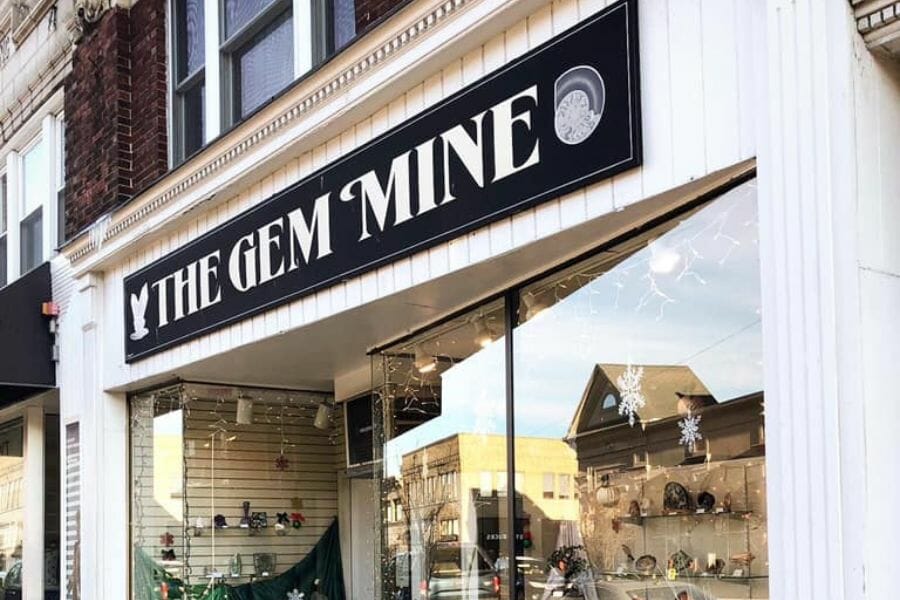
So many crystals to uncover, so little time to spend exploring— if you can relate to this, you might want to consider visiting the local crystal shops here instead. You don’t have to worry because New Jersey has some of the most amazing crystal shops that you’ll surely have a blast visiting:
- Rocky’s Crystals & Minerals – 559 Bloomfield Ave, Montclair, NJ 07042
- Freedom Rocks – 550 Cookman Ave Suite 106, Asbury Park, NJ 07712
- Summit Crystals – 510 Morris Ave, Summit, NJ 07901
- Serendipity Crystals – 271 Newark Ave, Jersey City, NJ 07302
- Cha Cha Gifts – 1300 Livingston Ave, North Brunswick Township, NJ 08902
- From the Mines Crystal Warehouse – 100 Stonehurst Ct, Northvale, NJ 07647
- Gary’s Gem Garden – 3119 NJ-38, Mt Laurel Township, NJ 08054
- The Gem Mine – 65 Westwood Ave., Westwood, NJ 07675
- Gemtuitive Crystals & Minerals – 923 Main St, Boonton, NJ 07005
- Aradia’s Treasure Metaphysical Shop – 19 N Centre St, Merchantville, NJ 08109
Additional places to find crystals in nearby states
If you’ve already tried all of our recommendations above or are planning a trip out of the state, you should check out our guides for neighboring states:
If you have any recommendations we haven’t covered, please leave them in the comments below!

